Road Warriors 2019, Part 2: The Top Sports-Production Highlights of the Year
Behind the Scenes at CWS, MLB All-Star, X Games, LLWS, US Open, ESL One, and Overwatch League Final
Story Highlights
Following on the heels of a year that saw both the 2018 PyeongChang Olympics Games and the 2018 FIFA World Cup, one might have expected the 2019 sports-production calendar to be a bit quieter. As this year draws to a close, it’s clear that that could not be farther from the truth. Broadcast networks and digital distribution platforms alike were busy from January on, upping the production ante on every event from the College Football Playoff National Championship Game to the Super Bowl to the Indianapolis 500 and more. In addition, 2019 saw the U.S. Women’s National Soccer Team once again emerge victorious at the FIFA Women’s World Cup.
Here is a look back at many of the events where SVG was onsite, including both traditional tournaments like the NCAA Men’s Basketball Final Four and the US Open, as well as esports tournaments like Overwatch League Finals and the ESL One New York. Read on and remember the new technologies and production workflows that were introduced this year, and – most importantly – the people behind the scenes who brought these productions and many more to life. Also check out PART 1 and PART 3 of Road Warriors for more coverage of 2019 top productions.
College World Series
TD Ameritrade Park, Omaha, NE
June 15-26
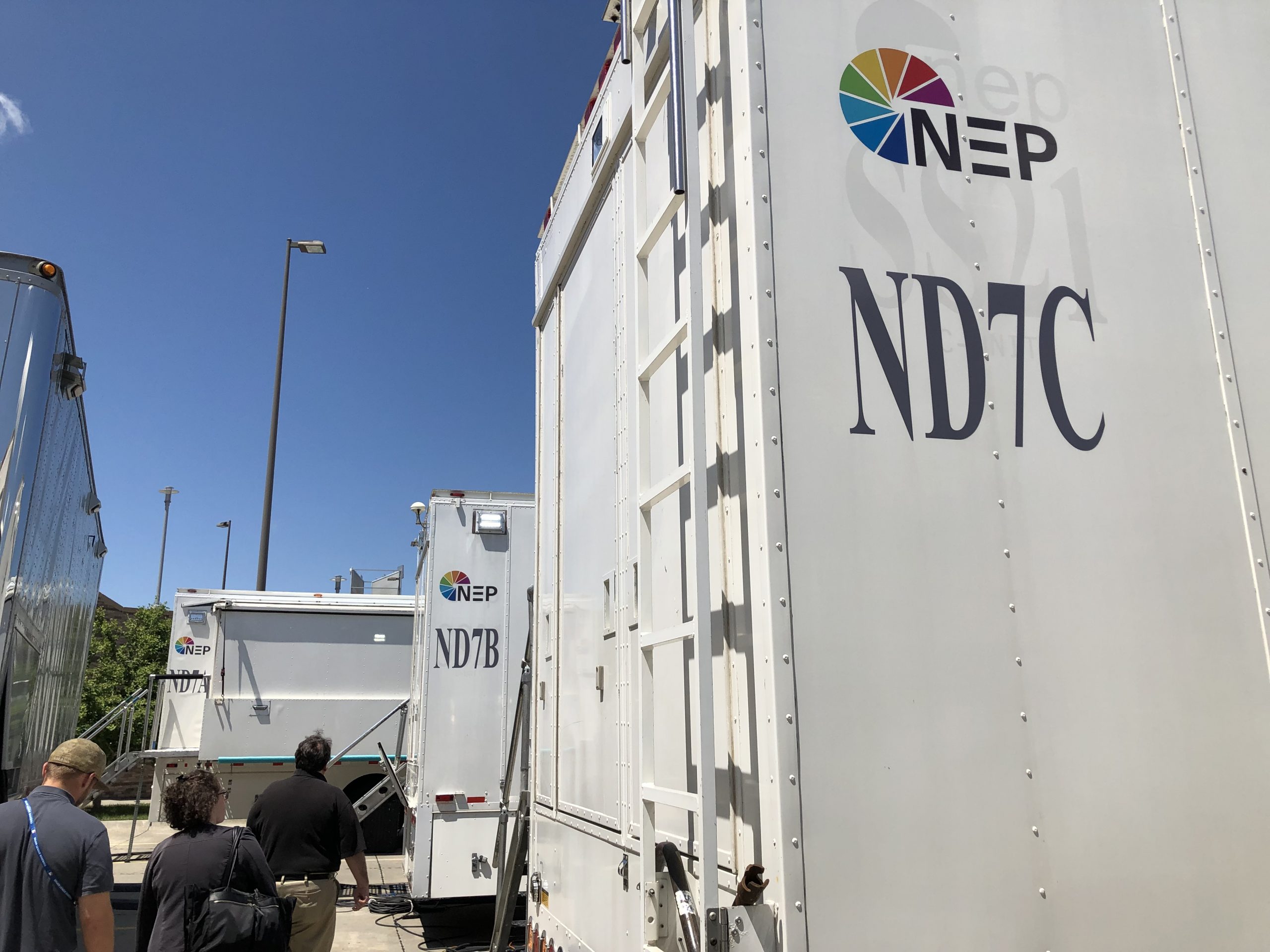 At the 2019 College World Series, ESPN deployed technology usually reserved for MLB telecasts, including a 4D Replay system, a POV camera on the mask of the home-plate umpire, and all-encompassing surround coverage on ESPN3.
At the 2019 College World Series, ESPN deployed technology usually reserved for MLB telecasts, including a 4D Replay system, a POV camera on the mask of the home-plate umpire, and all-encompassing surround coverage on ESPN3.
“The goal is to serve the baseball fan. A large amount of them are accustomed to watching Major League Baseball, so they are accustomed to technologies that are typically available only at that level,” said Chris Swihart, remote operations producer, ESPN. “Our production approach has changed a little bit this year. The overarching production support and production management are being overseen by a group of folks who also do [those] Major League Baseball games. We’re trying to bring that feel to some of our bigger college events as well.”
The College World Series crew was in an advantageous situation leading up to the tournament. ESPN had just produced the first MLB game in the state of Nebraska; the Kansas City Royals vs. the Detroit Tigers at TD Ameritrade Park. After the game was over, a majority of the onsite staff and the equipment remained in its place for its use in this tournament. One prime example was NEP’s ND7 production truck, whose four units (A, B, C, and D) were in use. As for transmission going on inside the truck, the games were transmitted in 720p.
Aside from the RF UmpCam and the 100 cameras used for the 4D Replay system, a lineup of 25-30 total cameras were also used for the production. Besides the many POVs and robos on the field, there were three Sony HDC-4300’s with super-slo-mo playback (located at low home plate, tight center field, and high third base), a Fletcher-provided Sony HDC-4800 super-slo-mo with 4K capability, a jib camera from Fully Armed Productions, and a Winged Vision aerial camera.
The hardware wasn’t the only technology that was left behind. The College World Series used K-Zone replays for pitch location, which is normally seen on Sunday Night Baseball and other MLB on ESPN telecasts. – Kristian Hernandez
MLB All Star Game
Progressive Field, Cleveland, OH
July 9
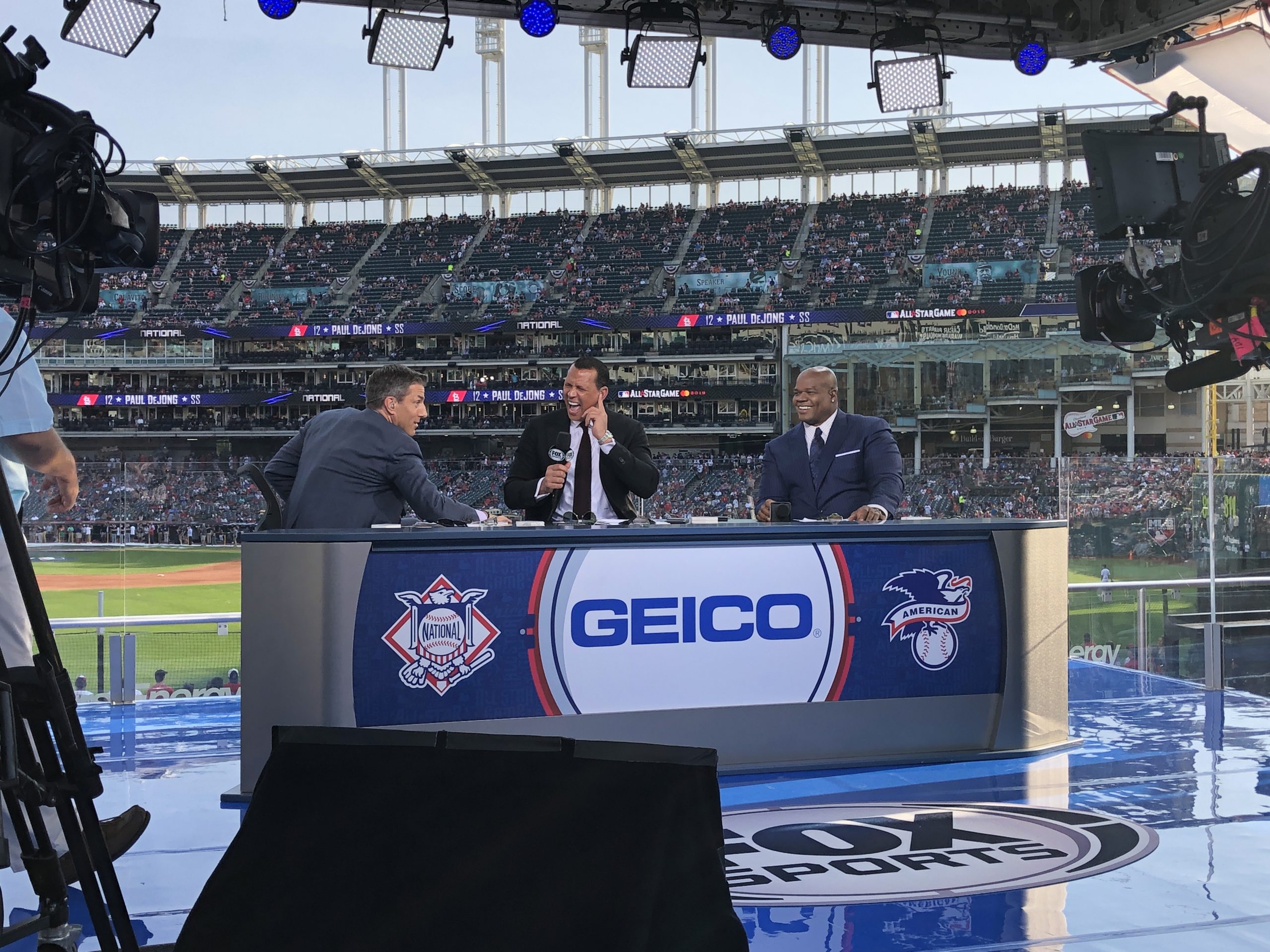 In true Fox form, the broadcaster rolled out its largest and most technology-rich MLB All-Star production ever, including transporting Virtual Eye Graphics from the golf course to the ballpark, deploying 4DReplay for the first time, and reviving the DirtCam after a three-year absence.
In true Fox form, the broadcaster rolled out its largest and most technology-rich MLB All-Star production ever, including transporting Virtual Eye Graphics from the golf course to the ballpark, deploying 4DReplay for the first time, and reviving the DirtCam after a three-year absence.
“MLB All-Star is obviously one of our huge tent poles and one of our favorite events,” said Mike Davies, SVP, technical and field operations, Fox Sports, speaking at the annual event. “We put all this technology into one event here, but the All-Star Game is, almost by definition, a short game without a lot of time to put all these cool elements in. So, as much as we like to get this technology on TV, the All-Star Game also functions as a very valuable testing ground for this technology in a real-world environment. Then we can have a better gauge whether to use the technology [for MLB Postseason] in October and on other events down the line.”
Fox Sports worked with Animation Research Ltd (ARL) to bring the Virtual Eye graphics system to baseball. The Virtual Eye was provided with MLB ballpark data to create a 3D virtual representation of Progressive Field and the surrounding area in downtown Cleveland. For the All-Star Game, the system leveraged MLB Statcast tracking data to provide AR graphics that track and compare pitches (for example, fastball vs. curveball), home runs, and other key moments in the game.
Between game coverage and studio shows, Fox deployed a total of 39 cameras (up from 36 last year). The complement also included seven Sony HDC-P1 robotic systems (provided by Fletcher), an RF MōVI rig and RF handheld system (provided by CP Communications), and an aerial from the Goodyear Blimp (provided by Wingedvision).
Fox Sports’ flagship production trucks — Game Creek Video’s Encore A, B, and C units — were back in the All-Star compound for the second consecutive season, along with Game Creek’s Edit 2 truck. The primary control room inside the Encore B unit handled the game production, and a second production area was created in the B unit to serve the onsite studio shows. – Jason Dachman
X Games Minneapolis
U.S. Bank Stadium, Minneapolis, MN
August 1-4
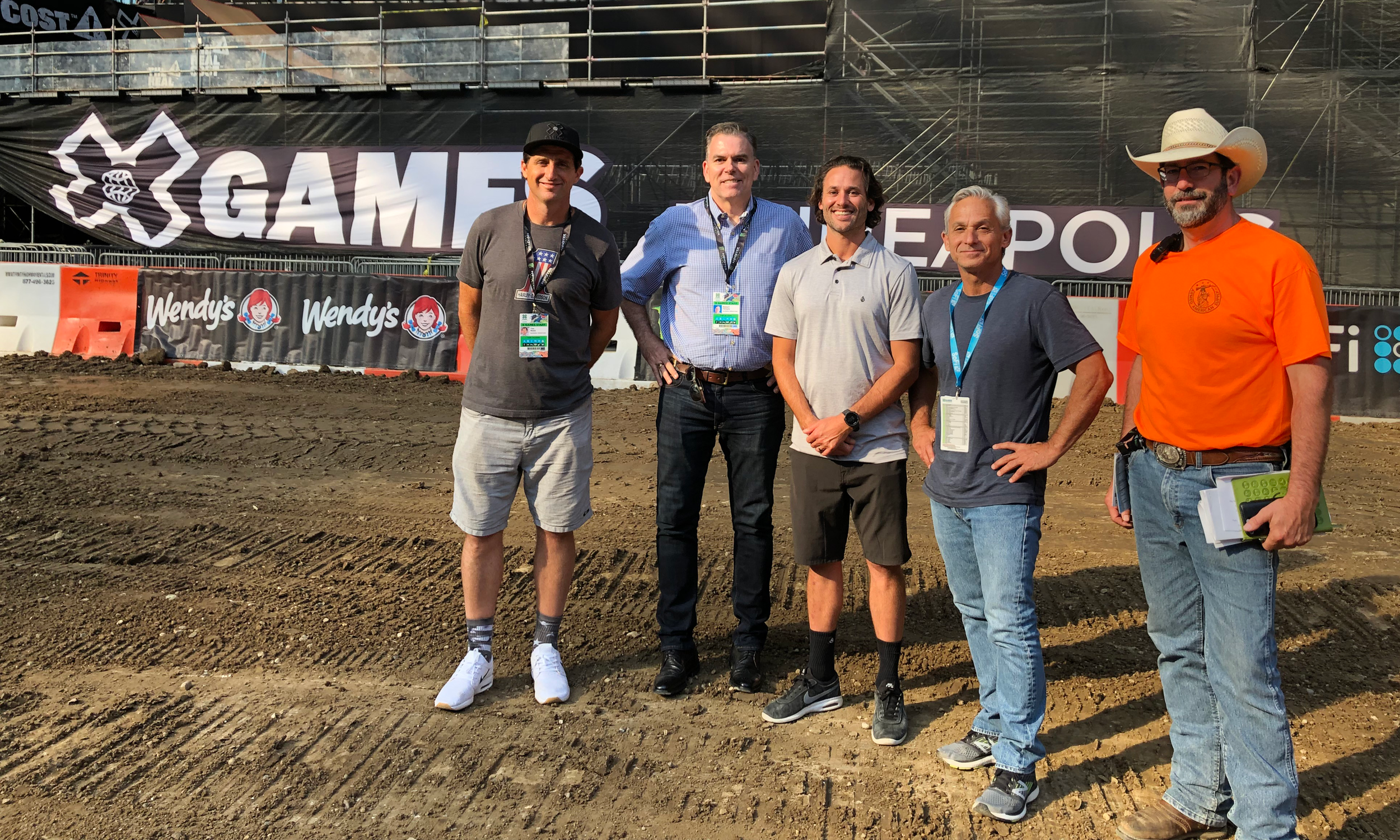 For years, X Games has pushed the envelope not just for what’s possible with its athletes on the track or the halfpipe but also for sports-video production and technology. This year, Minneapolis’s U.S. Bank Stadium was packed with cutting-edge cameras, unique technology deployments powered by an ocean of RF, and a robust audio and comms plan that powered approximately 18 hours of live linear content over the event’s four days.
For years, X Games has pushed the envelope not just for what’s possible with its athletes on the track or the halfpipe but also for sports-video production and technology. This year, Minneapolis’s U.S. Bank Stadium was packed with cutting-edge cameras, unique technology deployments powered by an ocean of RF, and a robust audio and comms plan that powered approximately 18 hours of live linear content over the event’s four days.
It also wouldn’t be X Games without an impressive camera arsenal ranging from the beefiest of high-speeds to the tiniest of Antelope Picos. ESPN and Echo deployed a base of about 35 Sony HDC-2400’s to handle the primary acquisition load. Meanwhile, a sea of specialties added color to the proceedings: five Sony HDC-4300’s offered super-slow-motion imagery, Spidercam delivered aerial coverage, and four robotic cameras provided scenic shots.
A 50-ft. Technocrane also covered its very first Summer X Games, as did the popular Pylon Cam, which ESPN uses on Monday Night Football and major college football games.
With the addition of an Apex Legends esports stage at U.S. Bank Stadium, this year’s X Games production compound expanded to house six trucks, including Dome Productions’ 4K-capable VISTA unit, which produced live Apex Legends esports shows for distribution to Twitch in 1080p.
Five of the trucks in the compound were courtesy of Dome: Journey, Pacific, and Silver are here, along with an expando B unit housing communications, robo camera ops, and a MADI router. An extra truck in the compound housed a BSI control center for the large complement of RF cameras and comms. – Brandon Costa
Little League World Series
Howard J. Lamade Stadium and Volunteer Stadium
South Williamsport, PA
August 15-25
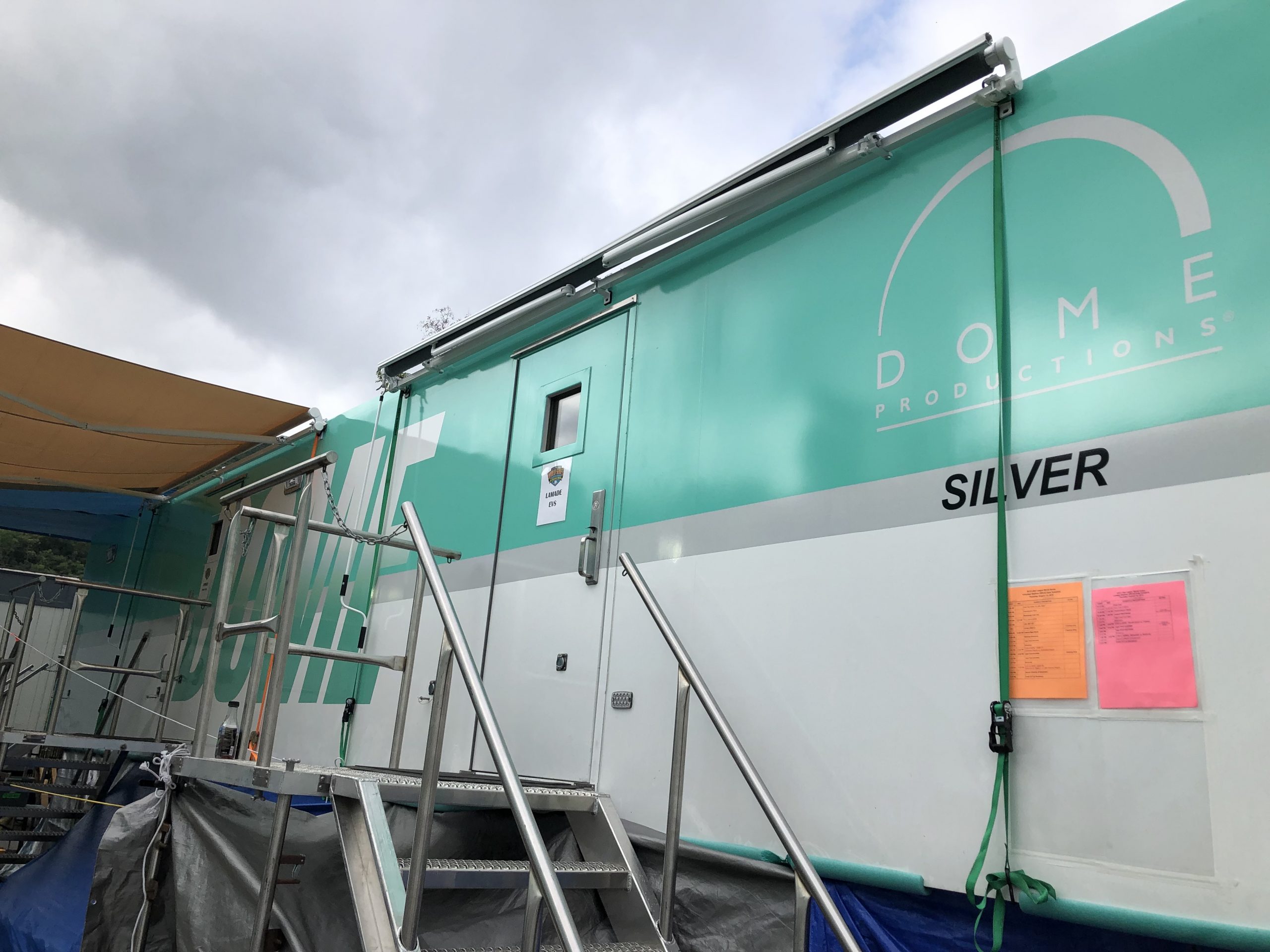 For the Little League World Series, ESPN arrived in Williamsport, PA, with both top-of-the-line technologies used on Sunday Night Baseball, such as 4DReplay and 1080p, and new creations, such as the Kidscast second-screen experience.
For the Little League World Series, ESPN arrived in Williamsport, PA, with both top-of-the-line technologies used on Sunday Night Baseball, such as 4DReplay and 1080p, and new creations, such as the Kidscast second-screen experience.
“The partnership between ESPN and Little League has been very strong for many years, and it’s forecast to go long into the future,” said Joe Rainey, senior remote operations specialist, ESPN. “We’ve always got a pretty strong technical commitment to raising the bar. We’ve made a number of changes in our workflow. Although we might look a little smaller than we used to look, we’ve gotten more efficient, using more-powerful equipment, and working a little bit smarter.”
Although the action within the foul lines remained the same, the location and structure of the truck compound have changed over the years. The compound used to be a lot closer to the stadiums, with the trucks parked right outside Lamade Stadium. When the concourse was expanded and congestion caused the operation to relocate (the overall number of onsite staffers is more than 300), the network decided to hit the higher ground and placed everything on a perch overlooking the concourse.
Inside the current layout, Dome Productions had an overwhelming influence, with its new Silver truck maintaining the games in Lamade and the Journey truck facilitating the international contests across the way in Volunteer Stadium. A Dome Productions B unit was onsite for other duties, including replay with 12 12-channel EVS machines and eight XT4K servers.
For onsite editing, Creative Mobile Solutions provided a trailer on the far side of the lot. ESPN’s Bristol, CT, campus added some edit help via its REMNAS file-transfer server. To ensure a smooth production, CAT Entertainment Services supplied two generators in the case of a loss of power.
Outside the compound and within the ballparks, the camera complement was anchored by 12 hard cameras and 12 handhelds, including three super-slow-motion versions. With a big emphasis on the national games, the specialty cameras in Lamade were not the same as those in Volunteer. From the sky, an aerial camera is capturing sweeping shots of the entire complex as well. – KH
US Open
USTA Billie Jean King National Tennis Center, Flushing Meadows, NY
August 19 – September 8
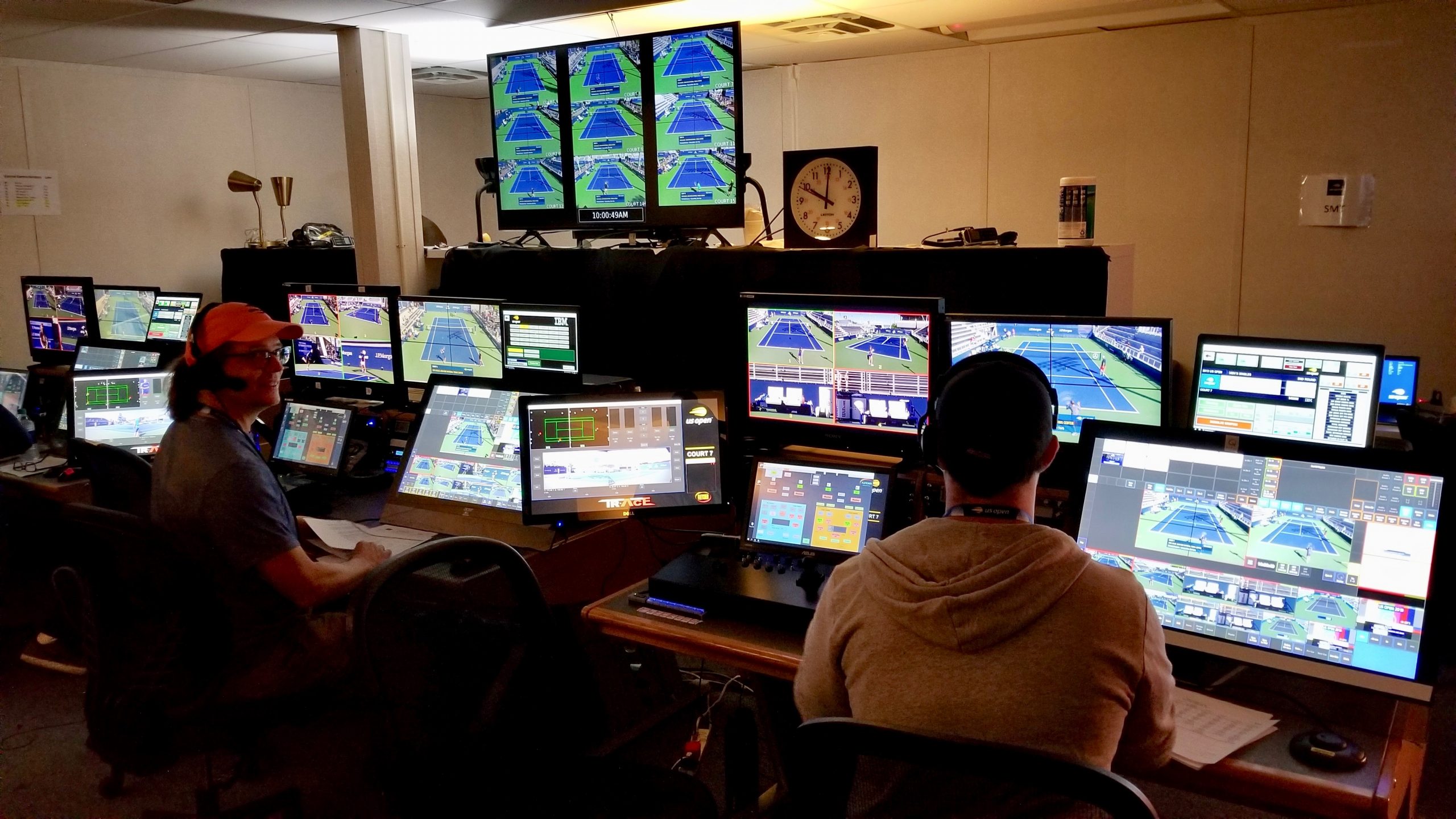 The 2019 US Open marked the end of an era for ESPN and the USTA as, next year, the technical infrastructure will make the leap from SDI baseband to IP. The SDI technical core this year — once again provided by Gearhouse Broadcast, which oversaw the technical aspects of the operations — was put to good use by more than 400 production personnel one last time for both ESPN’s domestic unit, its host broadcaster operations, and other on-site rights partners like Eurosport, Wowow, Prime, and more.
The 2019 US Open marked the end of an era for ESPN and the USTA as, next year, the technical infrastructure will make the leap from SDI baseband to IP. The SDI technical core this year — once again provided by Gearhouse Broadcast, which oversaw the technical aspects of the operations — was put to good use by more than 400 production personnel one last time for both ESPN’s domestic unit, its host broadcaster operations, and other on-site rights partners like Eurosport, Wowow, Prime, and more.
“We have a phased upgrade plan that as we can’t just think about tomorrow,” said Dennis Cleary, ESPN director, remote operations, during the tournament. “We have to think all the way to 2025.”
The IP plans for next year are being finalized but there are plenty of changes this year, most notably changes to the compound. ESPN’s physical presence for the past five years has been a large two-story technical operation center with multiple control rooms, audio rooms, and the core technical facilities. This year, the ESPN administration building also had two floors, expanding its size to 11,000 sq. ft. (ESPN’s total footprint is 22,580 sq. ft.) and allowing for the ESPN team to be more centrally located than ever.
The second floor had an expanded production area for the ACES production teams that cover the outer courts, two audio rooms that handle audio for those courts, and additional commentary booths that can do off-tube or voice over work.
NEP’s growing portfolio of companies was on full display at the US Open. In addition to supporting the USTA and rightsholders with content distribution and communications, three NEP mobile units were onsite, Mediatec deployed a state-of-the-art LED wrap display on the court at Arthur Ashe Stadium, Bexel provided extensive fiber support, Fletcher had an army of robos on hand and its TRACE camera-tracking system as part of ESPN’s ACES productions on the outer courts, and Big Screen produced content for screens across the grounds.
NEP’s Chromium and Nickel mobile units were once again on hand to support the USTA’s world-feed production. In addition, NCP8 was back, serving the ITV multiscreen mosaic production carried by DirecTV in the U.S. – Ken Kerschbaumer and JD
ESL One New York
Barclays Center, New York, NY
September 28-29
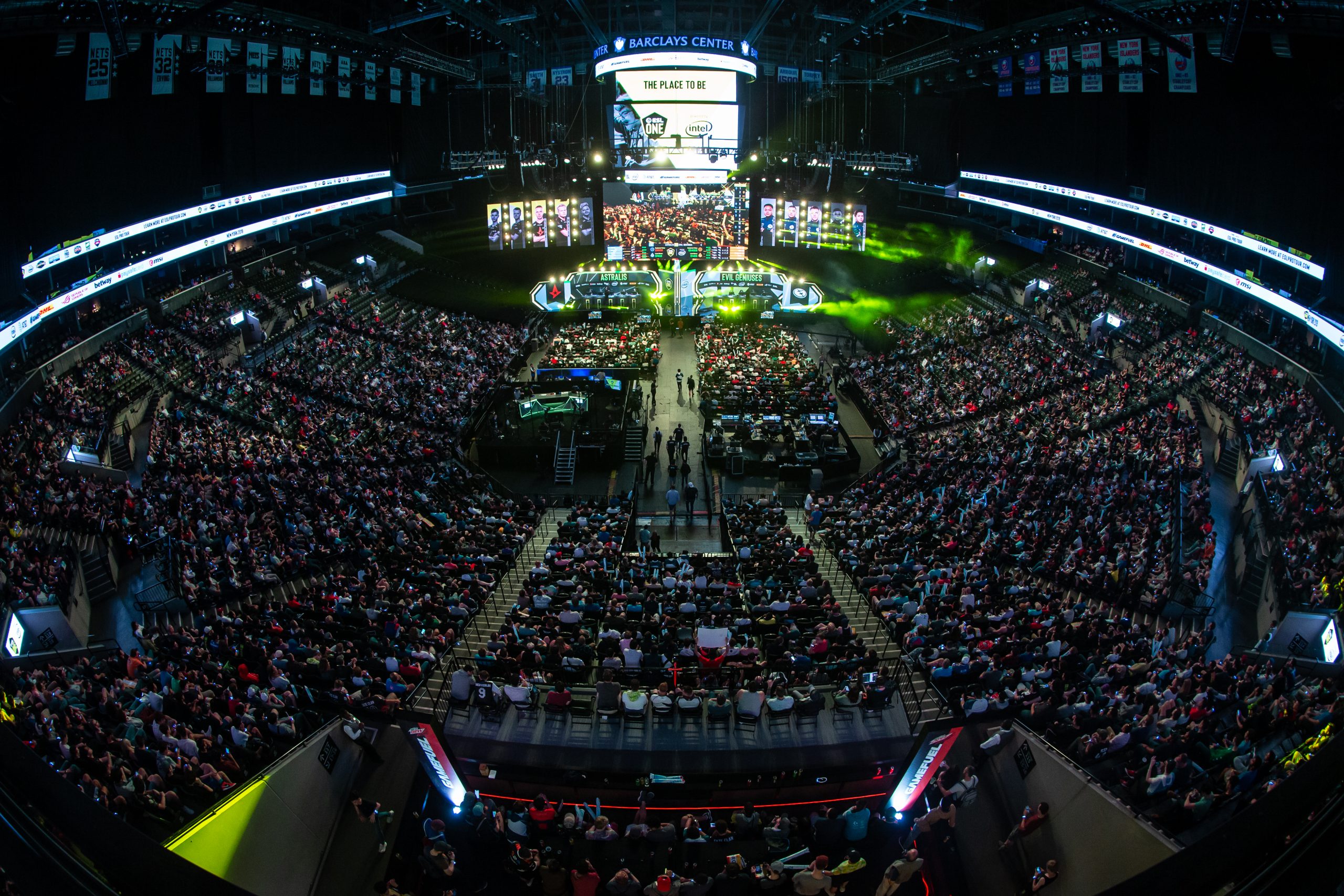 ESL, the world’s largest esports company, traveled to Barclays Center in Brooklyn for ESL One New York, a Counter-Strike: Global Offensive (CS:GO) competition that filled up the lower bowl of the arena with thousands of esports fans as the North American roster Evil Geniuses upset Astralis from Denmark. Sven Hoffmann, Global Event Executive Producer, ESL, and Ralf Burkhardt, Head of TV Production, ESL, oversaw a team of 25 ESL core production staffers who travel the world to ensure the coverage has a consistent feel from one event to the next.
ESL, the world’s largest esports company, traveled to Barclays Center in Brooklyn for ESL One New York, a Counter-Strike: Global Offensive (CS:GO) competition that filled up the lower bowl of the arena with thousands of esports fans as the North American roster Evil Geniuses upset Astralis from Denmark. Sven Hoffmann, Global Event Executive Producer, ESL, and Ralf Burkhardt, Head of TV Production, ESL, oversaw a team of 25 ESL core production staffers who travel the world to ensure the coverage has a consistent feel from one event to the next.
The philosophy around esports productions is constantly evolving, especially given that the production team is not only focused on delivering a great show for fans around the world (ESL events are broadcast in 20 different languages around the globe with local partners handling native-language commentary) but also for the fans in the venue. And the in-game experiences for both players and fans are also constantly changing.
“We have a whole department doing nothing but improving the in-game experience in the venue and on our streams,” says Hoffmann. “Esports is not as physically visible as regular sports but what makes it as interesting is the athletes’ emotions. We need to help translate what is going on behind the screens as the fans can’t see the faces of the players for most of the time, so we have Marshall POV cameras getting a good mix of player reactions to show how emotional and intense they are and then to bring it to the audience.”
The big news from a TV production standpoint was that the event marked the debut of NEP’s SS8 mobile production unit. NEP has provided the back-end TV production facilities for all of ESL’s events for the past three years. The truck features a Grass Valley Kayenne X-Frame production switcher, Sony HDC 3500 cameras, Canon lenses, a Calrec Apollo audio console, the EVS XT-VIA replay servers, and a Lawo IP router. – KK
Overwatch League Final
Wells Fargo Center, Philadelphia, PA
September 29
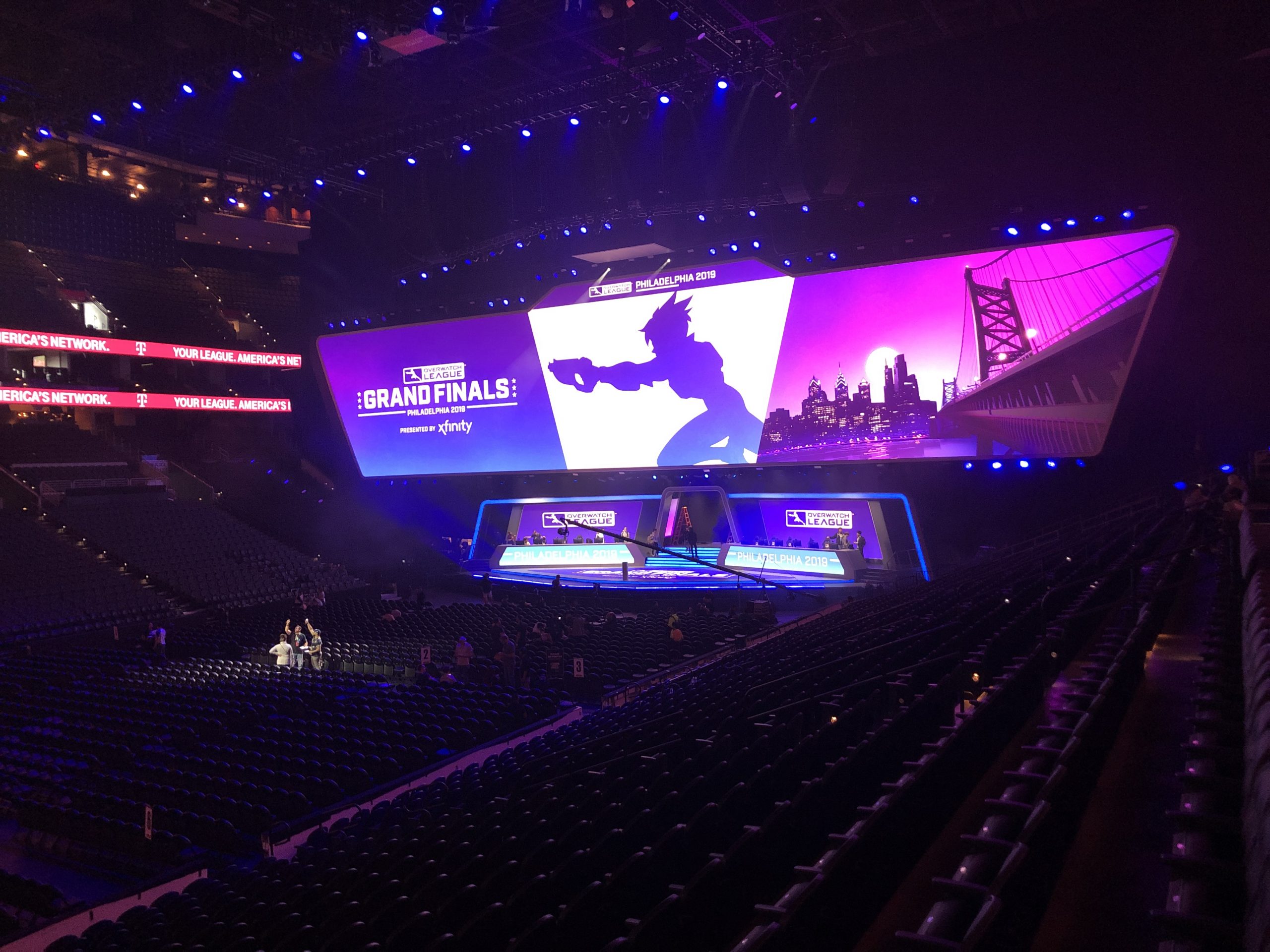 The two best teams of this year’s Overwatch League season, the San Francisco Shock and the Vancouver Titans, as well as every fan in the esports universe arrrived in droves to the Wells Fargo Center for the 2019 Overwatch League Grand Finals.
The two best teams of this year’s Overwatch League season, the San Francisco Shock and the Vancouver Titans, as well as every fan in the esports universe arrrived in droves to the Wells Fargo Center for the 2019 Overwatch League Grand Finals.
“The relationship with Barclays Center was great, but this venue is owned by one of our teams,” said Pete Emminger, VP, global broadcast, Blizzard Entertainment. “Since Comcast Spectacor owns the Fusion and this building, they have become one of our constant partners. They’ve been super helpful, and we’ve had a really good collaboration. The [Wells Fargo Center team] have been going through a pretty recent renovation and they’ve kept in the loop on the progress and all of their plans.”
Outside of the Wells Fargo Center, two NEP mobile production trucks (EN3’s A and B units) handled all of the typical bells and whistles of a traditional sporting event, but inside NEP’s BT-1 auxiliary unit was where the true magic happened. In a blur of adrenaline and excitement, multiple technicians controlled the observer room that handled all of the in-game coverage.
In addition to their responsibility of publishing the in-game footage, the observer room controlled the personalized viewing for Overwatch League All-Access Pass subscribers on Twitch.
In the other NEP EN3 units, the A-unit was the home of the main production crew. Other production duties, such as EVS servers (with 30 channels of replay) and transmission services were in the B-unit.
With the league’s 20 teams coming from six countries on three separate continents, the viewership for the Grand Finals was on a global scale. With 29 original feeds (plus three backup channels), a total of 32 transmission paths moved the various signals to and from the TV compound via IP distribution through the cloud with AWS. On Twitch, the matches hosted channels in five languages: English, Korean, Russian, French, and Portuguese. – KH
NOTE: This Road Warriors article appears in the 2020 SVG Mobile Production Yearbook. CLICK HERE to read the digital version of the full publication now!
